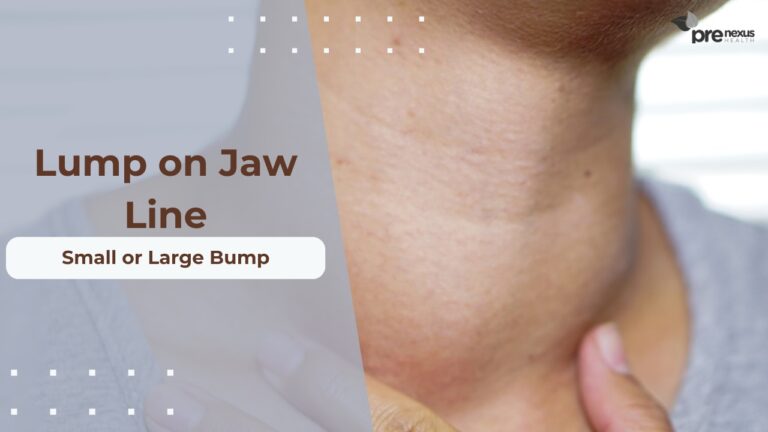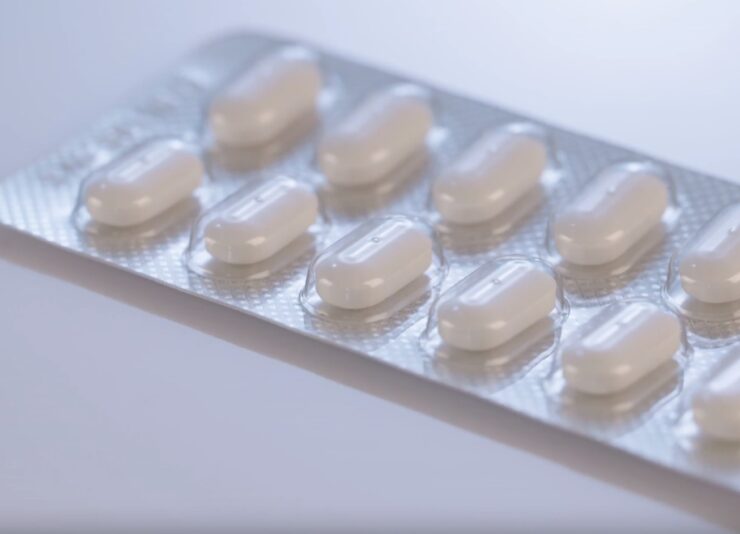After years I’ve spent as an internal medicine physician, I’ve seen many patients worried about lumps on their jawlines.
Even though it’s natural to feel concerned, keep in mind that not every lump signifies a serious issue.
Now I will tell you more about the characteristics of jawline lumps – from hard to movable, small to large, and even painful ones near the ear.
We’ll discuss potential causes, symptoms, diagnostics, and treatments to provide you with a comprehensive understanding of this common concern.
Key Takeaways
- Jawline lumps can be caused by various conditions, including infections, cysts, swollen lymph nodes, and tumors, but not all are serious.
- Diagnosing jawline lumps involves a clinical examination, medical history review, imaging studies, and sometimes a biopsy, with treatments ranging from antibiotics to surgery.
- Preventing some jawline lumps is possible with good oral hygiene, a healthy lifestyle, and regular self-examinations to catch changes early.
Your Jaw Structure Explained
Anatomy of the Jaw
The jaw consists of two bones, the upper maxilla, and the lower mandible.
The mandible, more commonly known as the jawbone, is the only movable bone in the face.
It hosts the lower teeth and is responsible for opening and closing the mouth, as well as allowing the movement necessary for chewing and speaking.
Tissues and Structures Around the Jaw
The jaw and its surrounding area house a number of important tissues and structures. These include:
- Salivary glands: These produce saliva, which helps in digestion.
- Lymph nodes: They act as filters for harmful substances and contain immune cells to fight infection.
- Facial muscles: These are responsible for facial expressions and movement.
- Nerves: They relay information between the brain and the face.
Normal Bumps and Lumps
Not all lumps and bumps on the jawline are abnormal.
Some common natural bumps include the mandibular tori and bony growths on the inside of the lower jaw.
They are harmless and usually painless. However, any new, changing, or symptomatic lump should prompt a visit to a healthcare provider.
Potential Causes
A variety of conditions could cause a lump to form on your jawline.
Cysts and Abscesses
Cysts and abscesses are sac-like structures that can form under the skin. They are filled with fluid, pus, or other material, leading to a lump. Cysts and abscesses on the jawline could be related to skin conditions, dental problems, or infections.
Lymphadenopathy
Lymphadenopathy refers to swollen lymph nodes. The lymph nodes along the jawline can become enlarged due to infections, immune disorders, or cancers, forming palpable lumps.
Richard Honaker M.D. shares more details about this condition in this article on YourDoctorsOnline:
Generalized lymphadenopathy can be caused by:
-
Strep throat
-
Chicken Pox
-
Certain medications
-
Immune system diseases
-
Cancer such as leukemia and lymphoma
Salivary Gland Disorders
Disorders affecting the salivary glands, including infections, stones, and tumors, can also lead to a lump on the jawline.
Tumors and Cancers
Although rare, lumps on the jawline could be a sign of benign or malignant tumors. They can originate from various tissues, including bone, connective tissue, lymphatic tissue, or salivary gland tissue.
Diagnosing the Cause of a Lump on Jawline
Once you consult with a healthcare provider, they will conduct a comprehensive evaluation to determine the underlying cause of the lump.
Clinical Examination
The provider will start with a detailed clinical examination. That includes palpating the lump to determine its size, texture, mobility, and if it’s painful. Doctors will also examine the inside of your mouth, your neck, and other lymph node areas.
Medical History
The doctor will ask about your symptoms, their duration, and if you have any other symptoms.
Another important step is medical and dental history, including any medications you’re taking and any previous or ongoing health conditions.
Imaging Studies
Imaging studies such as X-rays, CT scans, or MRIs might be ordered to get a better view of the lump and the surrounding structures. These images can provide essential information about the lump’s size, location, and relationship to nearby structures.
Biopsy
In some cases, your healthcare provider may recommend a biopsy. This involves taking a small sample from the lump, which is then analyzed in the lab to confirm the diagnosis.
Treatment
The treatment varies greatly depending on the underlying cause.
1. Antibiotics
If the lump is due to an infection, antibiotics are typically the first line of treatment. They can help your body eliminate the bacteria causing the infection and reduce swelling and pain. Antibiotics treatment is associated with diarrhea and studies suggest that taking probiotics can prevent it.
2. Drainage or Surgical Removal
For cysts, abscesses, or other lumps filled with fluid, a professional might need to drain them. In some cases, surgical removal might be required, especially for benign or malignant tumors.
3. Radiation or Chemotherapy
If the lump is due to cancer, more specialized treatment like radiation or chemotherapy may be necessary.
It depends on the type, stage, and location of the cancer.
Prevention Tips
Although not all lumps on the jawline can be prevented, some measures can reduce your risk. For existing lumps, certain actions can help manage symptoms and improve your comfort.
Oral Hygiene
Maintaining good oral hygiene can help prevent some causes of lumps on the jawline, like abscesses or salivary gland infections. Brush and floss regularly, and ensure you schedule and attend regular dental check-ups.
Pimples on the tongue can appear in various locations, including underneath, on the tip, along the sides, or at the back, and there are effective ways to eliminate them.
Healthy Lifestyle
Adopting a healthy lifestyle, including a balanced diet, regular exercise, and avoiding smoking and excessive alcohol, can help maintain a healthy immune system. This reduces your risk of infections and certain types of cancers.
Regular Self-Examinations
Regularly examining your neck and jawline can help detect any lumps or bumps early. If you notice a new lump or changes in an existing lump, make sure to consult with a healthcare provider promptly.
Pain Management
If the lump is causing discomfort, over-the-counter pain relievers might help. Applying a warm compress can also help relieve pain. However, always consult with a healthcare provider before starting any new medication.
FAQ
I’m a dermatologist who loves studying and treating skin (obviously). I went to medical school and chose dermatology because I wanted to help people with skin problems. I’m dedicated to helping people feel better about their skin (and in it).






